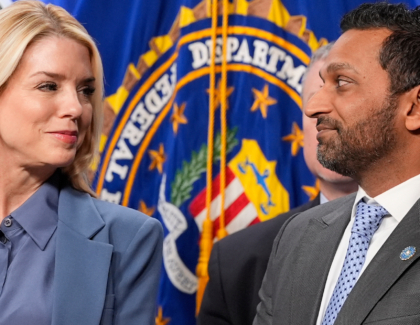Sign up for the daily CJR newsletter.
LAST WEEK, AS THE CHARLESTON POST & COURIER covered a hostage standoff and shooting at a local restaurant, editor Mitch Pugh announced his paper would shut down comments on the developing story.
FYI: We are in the process of disabling comments on the breaking shooting story. Majority either violated TOS, off topic or repugnant.
— Mitch Pugh📰 (@SCMitchP) August 24, 2017
Pugh has advised his Twitter followers for years to avoid the comments sections on stories and social media sites. But responses to coverage of the shooting in Charleston—a scene that gripped a city familiar with gun violence and the national news—compelled Pugh to shut down comments on a story at the P&C for the first time he can recall.
RELATED: The telling difference between captions for these Hurricane Katrina photos
The Post & Courier followed its breaking news coverage with a story about the comments its work attracted—“a torrent of racist, conspiratorial, politically-charged and outright bizarre comments.” For that story, Pugh said most of the comments “were coming from outside of our market.” The P&C also noted an uptick in comments after its coverage caught a link from The Drudge Report.
The incident in Charleston reignited a debate about whether local news outlets should keep online comments—and just how to keep such comments civil. Countless newsrooms rely on comments sections and social media to foster community engagement and drive traffic to their sites, but those platforms are too frequently hosts to hate, bigotry, threats and damaging content. Many of those newsrooms lack the resources required to clean up comments or scrub offensive material from such platforms. “A lot of editors in the country are struggling with how to handle this,” Pugh says.
The Post & Courier previously covered Dylann Roof’s racist church massacre, as well as the shooting death of Walter Scott by police officer Michael Slager. With each of those stories, Pugh says he didn’t have to handle commenters in the comments section to the extent he did last week.
However, some local newsrooms are experimenting with new technology to try and disinfect the cesspools that can swirl in the spaces below online stories.
Civil Comments sells a platform to news sites and provides a self-moderation system which requires commenters to rate multiple other comments for civility— and then rate their own comment— before a comment shows up on the site. The system also uses algorithms and machine-learning artificial intelligence to pool data concerning the voting and comment histories of frequent users, in order to filter out bad behavior.
“The system will automatically handle it for you,” says co-founder Christa Mrgan. “It’s sort of like trolls get a timeout, basically, and when they behave themselves they come back and rejoin the conversation.”
Civil Comments, which is funded by investors and charges for its service based on comment volume, is working with about 60 newsrooms, most of them based in North America. Canada’s largest paper, The Globe and Mail, is a client; so is Alaska Dispatch News, the state’s largest newspaper. Al.com, the Alabama Media Group’s online platform for its three markets in Birmingham, Huntsville and Mobile, is in a testing phase with the product.
In late May, The Denver Post acknowledged that its free commenting system could sometimes work like “rich manure,” fostering “fertile battlegrounds for all manner of trolls, racists and spam artists.” The Post, Colorado’s largest newspaper, instituted Civil Comments; the move is considered an experiment by the paper’s owner, Digital First Media, which could potentially employ Civil Comments at its considerable local news properties, says Dan Petty, Digital First Media’s digital director for audience development.
Policing comments takes a toll on resources, which is why the DFM-owned Daily Camera in Boulder killed off its comments altogether last summer. But since The Denver Post started using Civil Comments, a paid service rather than a free commenting system, the investment so far has been worth it.
“The time it takes to moderate has just given back hours to us,” says Rebecca Risch, the Post’s digital director. Daniel Schneider, an online producer at the paper who has overseen its various comment sections for a decade, says staffers used to spend up to 20 hours a week moderating comments—many times what they spend now.
ICYMI: One question that turns courageous journalists into cowards
“I remember sort of being, frankly, skeptical myself, thinking, ‘Oh great, some other vendor says they solved the comment problem,’” says Petty, who spent several years at The Denver Post before taking a corporate job at Digital First. Petty says Civil Comments have been “transformative” for The Denver Post.
Civil Comments, however, is just two years old. The company’s marketing director, Toby Hicks, says some of Civil Comments’ anticipated funding hasn’t come through. The company recently informed its media partners that there could be some changes to its corporate structure, but the papers shouldn’t be concerned, he says. “Civil is not going away,” says Hicks. “We have been looking at potential opportunities for mergers or even acquisitions, but we’re all very confident that everything will remain pretty well established as it is today.”
Coral, a Mozilla Foundation project developed in conjunction with The Washington Post and The New York Times, is a like-minded effort. Launched in 2014 with a grant from the Knight Foundation, Coral endeavors to “bring journalists and the communities they serve closer together.”
‘We’ve created a situation right now [where] we’re putting an empty box at the bottom of articles, walking away for two days, coming back and going, ‘Why the hell is it full of trash?’
Andrew Losowsky, who oversees Coral, thinks he knows why comment sections have become so bad for news sites. He puts it like this: Imagine you’re collecting donations for a food bank. You set a box down on the sidewalk and leave it for a few days. Passersby throw trash in it. So you do better. You set the box outside a grocery store with a sign on it stating you’re taking food donations. You monitor it and take the trash out if you see it. Then you try to do even better. Show examples of the kind of food you’re hoping for and what’s already been donated. Now you have an understanding of what you’re looking for and what success looks like. And you’re monitoring it to make sure it happens.
“We’ve created a situation right now [where] we’re putting an empty box at the bottom of articles, walking away for two days, coming back and going, ‘Why the hell is it full of trash?’” Losowsky says. “What it comes down to is more fundamental thinking about not just ‘How do we add community on top,’ but ‘What does success even look like with community?’”
One of Coral’s efforts is a free, open-source commenting software program called Talk, which seeks to create “a space where audience members can offer insights and engage in conversation about journalism, without being unduly vulnerable to attack.” The Brisbane Times in Australia uses Talk, and The Washington Post is in its second round of experimenting with it. Coral has a testing group of 15 different newsrooms, says Losowsky. “Local media is very much a part of what we do and the way our focus is.”
Coral’s blog is a font of research on comments and moderation, much of it original. In January, Coral released what it calls “one of the largest surveys ever carried out on commenters across news sites,” whose respondents represent commenters from more than a dozen news sites in at least 10 states. A majority of respondents craved expert opinions and journalist responses in comment spaces, while the percentage of commenters who thought their sections were “civil” varied considerably.
Anyone want to write a plugin for our open-source comments system that forces users to wait the average reading time before posting? https://t.co/dzrXjdOMJ5
— Coral by Vox Media (@coralproject) August 30, 2017
Petty, at Digital First, says he’s been impressed with Coral’s research, and is keeping an eye on it. “I am firmly in the camp that we shouldn’t abandon comments,” Petty says. “I do think that clearly it has its problems and we’re working through those and it’s getting better.”
Pugh, the Charleston Post & Courier editor, sees last week’s uptick in offensive comments at his paper as out-of-character. The P&C previously covered Dylann Roof’s racist church massacre, as well as the shooting death of Walter Scott by police officer Michael Slager, which was caught on a cellphone camera. With each of those stories, Pugh says he didn’t have to handle commenters in the comments section to the extent he did last week.
“I think when you see a thread get out of control, it sharpens the mind, and we’ll certainly be watching those things more closely in the future,” he says. “I don’t think we’re going to make any snap decisions or policy decisions as a result. …I’d like to believe this is an outlier and we’re not going to continue to have these sorts of problems, but I’m not naive enough to think that we shouldn’t be checking and keeping closer eye on it.”
ICYMI: Headlines editors probably wish they could take back
Has America ever needed a media defender more than now? Help us by joining CJR today.







